This is actually one of the funnest things I do, but it’s incredibly time consuming. Enjoy a photo tutorial showing how I turned two strips of brass into two etched patina butterfly bracelets. The whole project takes about two days.
Step 1:
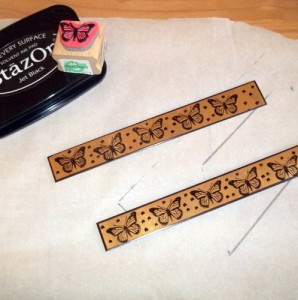
A butterfly design is stamped onto two brass blanks and I’ve used a Sharpie to give the bracelets a border and add some polka dots.
Step 2:

Masking tape is applied to the back of the bracelets so they can suspend into a vat of acid. The acid will not eat through the tape.
Step 3:
Step 4:
Step 5:

After soaking in etching solution for an hour the blanks are soaked in a solution of baking soda and water to neutralize the acid. The acid eats away the metal parts that don’t have an ink resist on them, so now my design is raised.
Step 6:
Step 7:
Step 8:
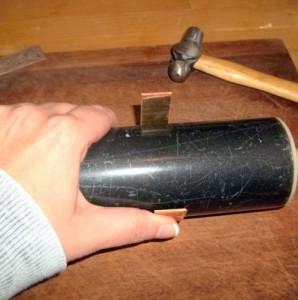
Now the blanks are hammered into a shape for a cuff bracelet. I use a rolling pin as a form because I’m too cheap to spend the money on a professional mandrel. They’re expensive.
Step 9:
Step 10:

The cuffs go into my rock tumbler with stainless steel shot, a drop of dish soap, and water. An hour or so of tumbling hardens the metal and removes any rough edges.
Step 11:

Now I’m applying 3 colors of patina for the background color. Smudging with fingers gives a better effect than a paint brush.
Step 12:
Step 13:

After drying for a night, I use a sanding block on the bracelets. The patina is removed from the raised parts of the bracelet giving my butterflies beautiful gold edged wings. The top bracelet has been sanded, the bottom one has not.
Step 14:
Step 15:
The result:
Tips for etching copper and brass:
~It’s messy. Wear old clothes, do it outside, and don’t expect your manicure to survive.
~Your design options are only limited by what you can draw or stamp on your blanks. I can’t draw squat, so I stick to rubber stamps.
~If you don’t ink off the borders of your pieces the edges will be rough and ugly.
~Etching solution can be saved and reused for the next batch.
~You can’t put etching solution in a metal container. Get cheap plastic ones that will never be used for food again.
~Use coarse sanding blocks or you’ll be sanding the patina off for hours with little result.
~I use raw copper or brass. I haven’t tried sterling yet because it’s so ridiculously expensive.
Enjoy!
Chrisy Bossie
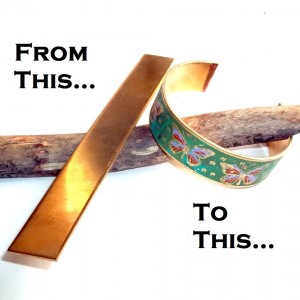





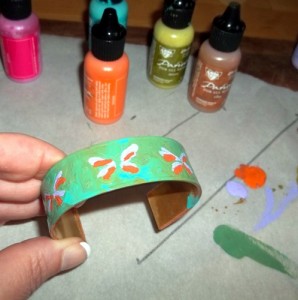


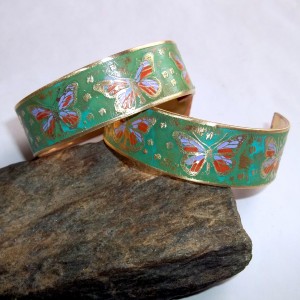
5 comments so far